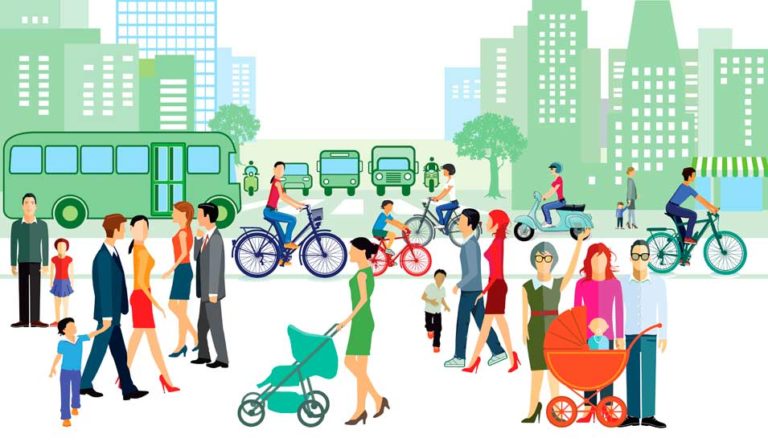A recent study by Harvard University in America sets a number of scenarios that anticipate the behavior of the virus over the next several years .. and reveal that the virus came to stay .. and that Covid-19 will become seasonal.
Nearly four months have passed since the first case of the emerging coronavirus (nCoV-19) was reported in Wuhan, China, the world remains traumatized by the pandemic that has affected more than 3 and a half million people, and has caused the deaths of more than a quarter of a million people Around the world – according to the Johns Hopkins University website – the Middle East has accounted for more than 8,800 deaths.And, shockingly, half of those death soccurred in the last 16 days alone, according to figures released on April 25.
Nearly a month and a half after the World Health Organization declared “the emerging coronavirus a global pandemic,” many countries have imposed a complete ban on their people to maintain social divergence measures as an essential step to reduce the spread of the virus and reduce the burden on the health care sector. But the question remains, everyone thirsts to hear his answer, when will life return to normal?
This is what Stephen Kessler – postdoctoral researcher in immunology and infectious diseases at Harvard School of Public Health – and his colleagues tried to answer by building a simulation model that anticipates the behavior of the virus over the next several years; They published it within the facts of a recent study in the journal Science, Last April. The results showed that the total numbers of infections with the emerging coronavirus until 2025 will depend critically on the development of human immunity. Computer simulations of the Harvard team assumed that Covid-19 would become seasonal, such as associated coronaviruses that cause common colds, with higher transmission rates in the cold months. This comes at a time when study researchers are still not familiar with a lot of information about the virus, including the level of immunity acquired from infection previously. And the results of the study stress that there is one thing almost certain: that “the virus came to stay”, it is completely unlikely that humanity will have a strong immunity that will last long enough that Covid-19 dies after the first wave, as was the case with the SARS virus in 2002–2003. .
Economic and social burdens
The study authors suggest that although a one-time social spacing may reduce critical conditions and reduce the burden on the health care sector, the infection will reappear once these measures are lifted. In the event that new treatments or an effective vaccine are not reached, or other interventions are followed, such as careful tracking of people who have been in contact with the injured, performing the necessary analyzes for them and applying quarantine procedures when necessary, it may be necessary to maintain social separation procedures, albeit intermittently Until 2022, which will constitute a major social and economic burden. Extensive viral tests will be required to determine when social divergence procedures need to be imposed.
“Allowing transmission times that reach a higher prevalence rate than is likely to mean accelerating the herd immunity acquisition,” says Mark Lipsic, co-author. On the contrary, long periods of social separation without rest are a bad thing. The results of the study reveal that in one scenario, “social separation was so effective that virtually no immunity of any kind was built up in the population,” hence the need for a discrete approach .
Many countries have made many interventions to try to control the spread of the virus, foremost among them being the conduct of high levels of virus detection tests and the timely handling of infected cases. While other countries have adopted measures such as closing schools, universities and workplaces and reducing gatherings. The main goal behind these strategies is to reduce the peak of the virus spread, by maintaining a stable or stable level of infections, or by causing a slight – albeit slight – decline in their numbers, which scientists call “flattening the epidemic spread curve.”
Islam Annan – CEO of Accsight for research in health care, health economics lecturer and epidemiology – explains that social divergence scenarios for the current epidemic are the only tool we now have to combat the spread of the virus, and he goes on to say: “It must first be implemented by law through Curfew, then launched a strong awareness campaign and its importance. “
However, “Annan” excludes countries from adopting the continuous social divergence until 2022. And he sees that if this happens, “this means increasing the budget allocated to health care, which is already low, as government spending on health represents only 2–5% of GDP. Total in many developing countries. ” Another burden that will need a huge budget, he says, is the introduction of new tools to help with social separation, especially in schools and public transportation.
What happens after the pandemic is over?
To build a model for how the new coronavirus can be transmitted over the next five years, Kessler and his colleagues used data available in the United States of America related to seasonal infection with similar coronaviruses and the levels of immunity that the human body shows against it, which is called Cross Immunity, It is a type of immunity that arises when a person is infected with viruses similar to a particular virus, which leads to the formation of antibodies to it, and therefore this person acquires partial immunity when a new virus appears that has characteristics similar to the characteristics of previous viruses.
The researchers of the study developed five scenarios about the effect of applying a one-time social spacing on the spread of the virus, taking into account many variables, such as whether the virus is seasonal or not, and the ability of the health care system to deal with critical situations, the formation of herd immunity and when it will be achieved . They also assumed that each person would infect 2.2 people with the virus, which scientists call (R0 = 2.2). The scenarios have been developed for varying periods of time: four weeks, eight, twelve, and twenty weeks, and the last is to apply social distance for an unlimited time.
Herd immunity is the immunity that a large number of people in a society create against a specific infection, which limits its spread, and it is formed through previous infection with the disease, or by creating a vaccine against it, and immunizing the largest number of people with it.
The study found that when disease transmission was not subject to seasonal factors, the one-time social spacing measures reduced the spread of the epidemic. All scenarios also showed the return of infection when lifting the social spacing measures. Accordingly, the results of the study go to the event that the seasonal infection is proven to disease, we will need to apply social divergence for each new wave of virus attack, and we need to double our capacity in caring for critical cases within health care systems, to be ready for future waves. The study indicated that herd immunity is one of the main pillars that can eradicate the epidemic, but the spread of the virus may return within 4 to 5 years in a new wave. If crossed immunity exists with other similar coronaviruses, then it will also lead to herd immunity, thus eliminating the epidemic, and the emergence of fewer waves in the future.
The study model was consistent with other models of how the emerging corona virus was transmitted. Another model that had used data from Sweden found that it was likely that the seasonal transmission of the new Corona virus in the post-epidemic period. It also found studies from both the University of London , the Royal School of Public Health at Harvard University of America that early implementation of social spacing strict is necessary to control the spread of the virus, and that in the absence of the development of new treatments or preventive measures, the social spacing intermittent may be the only way to avoid the burden of overwhelming On critical care while building the herd immunity.
Insufficient data
“The lack of data and information puts the results of the study into question, as the data used are for the temperate sub-tropical regions only, whose population represents only 60% of the world’s population. The study also assumed that no anti-virus vaccine was discovered, but we expect a vaccine within 12–14 months from now. Annan, who says the model assumed that schools and universities are closed for the duration of the study, explains. “Annan” adds that there are not enough data on the seasonality of the virus, as only five years of data are available for infection with similar coronaviruses, along with insufficient data on the herd immunity or crossed immunity.
He believes that developing a vaccine against the virus will change all the patterns mentioned in the study, “But the hope of producing a vaccine that can eliminate the virus by 100% is not likely, and we can see this in a flu vaccine that only reduces the possibility of influenza and not eliminating it.
The future and a spark of hope
In the best case scenario, as Kessler sees it, we will be able to keep the infection at a minimum until the vaccine becomes available, and then the vaccine will give us the rest of the immunity needed to stop the transmission of the virus. “Otherwise, we will have to come close to the herd immunity slowly and keep cases low enough to avoid overburdening health care systems,” he explains.
Kessler hopes that the vaccine will be available after 18 months, saying: “If this happens then there is no need for further modeling to anticipate the spread of the virus, and the epidemic should calm down considerably once enough people have eaten the vaccine.”
On the goal behind building this model, Kessler explains: “We wanted to report what might happen if the vaccine is not available soon. There is a lot of work to be done to prevent an increase in deaths and hospital stress.” He adds: “There are still 18 months, and this is a long time to wait, and the virus may cause a lot of damage before it is contained.”
With news of a gradual return to life in some countries such as Germany, New Zealand and Australia, people are clinging to the hope that life will soon return to normal. The study determines that intermittent social spacing will vary in duration and number of times from one place to another. “These decisions must be made locally, taking into account the prevalence rate, the underlying risk factors among the population, such as the proportion of elderly individuals, the rates of diseases such as heart or diabetes, and the efficiency of hospitals,” Kessler explains. Kessler believes that the endpoint of this epidemic is likely to be the development of herd immunity, when enough populations are immune to infection, so that the disease can no longer be an epidemic. While “Annan” believes that the virus is likely to continue in waves such as H1N1 and other influenza viruses, and adds: “History we learned that humans are adapting to the most ferocious viruses even when no treatment has been discovered.”




